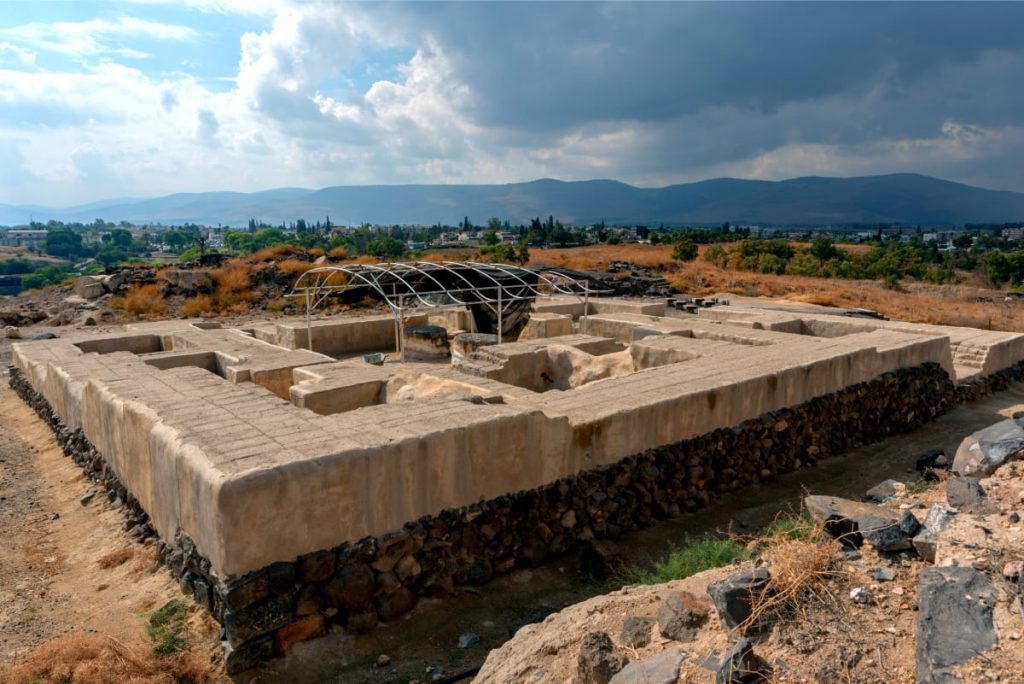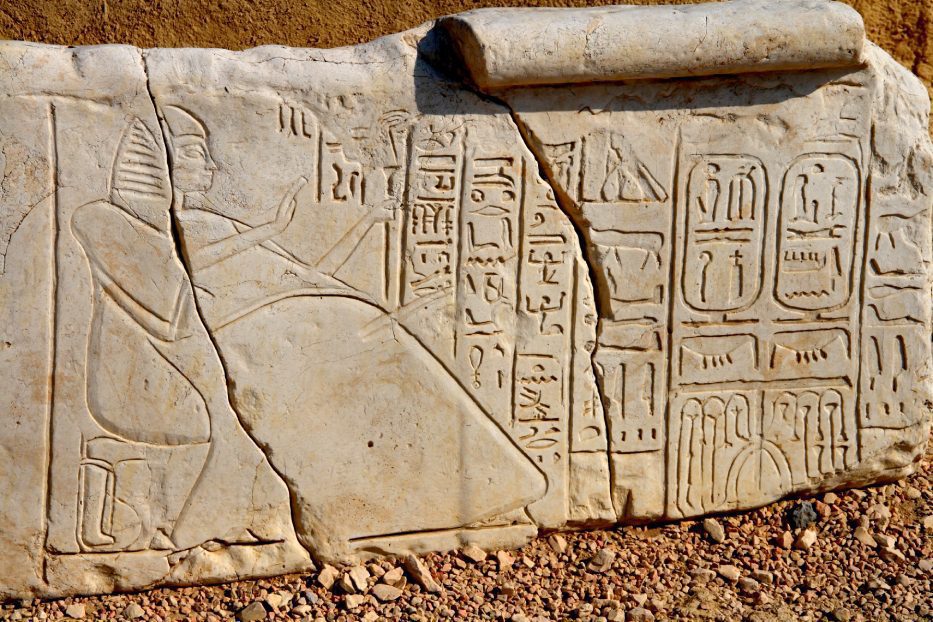There is lots of Archaeology in Beit-Shean to explore when touring the ancient Tel. Sadly lots of it today is stored in museums and not on the site but still this is a short post about some of these finds. As a private tour guide in Israel that often takes private tours to Beit Shean, I like to tell them all about the Tel before we get there.

THE EGYPTIAN GOVERNOR HOUSE AT THE TOP OF TEL BEIT SHEAN
Archaeology in Beit Shean: Finds From the Canaanite Period
On the top of Tel Beit Shean, archaeologists found something quite amazing. So interestingly enough they found three adjoining fragments comprising a partially preserved lintel depicting a kneeling worshiper on the left. and he is facing nine columns of hieroglyphs. Moreover, the text contains three of the five official names of Ramesses III. Firstly, his Horus name; Secondly, the Birth name, and Last the Throne name. When the latter two are enclosed in Cartouches. Mainly as words of adoration addressed to the king by the worshiper, who is identified as the:
as a “royal scribe, great Steward, Ramesses-user-khepesh.”

THE EGYPTIAN LINTEL FOUND AT TEL BEIT SHEAN
We know that Lintels bearing scenes of worshipers adoring royal names are well attested in Egyptian private architecture. The lintel is dated to Stratum number VI in Beit Shean; which dates to the Early 20th Dynasty. These fragments are generally considered to have originated from Building number 1500. Which is the largest and most impressive building of Stratum VI. Whose plan shows a notable similarity to New Kingdom’s private residence in Egypt.
The name mentioned appears in other inscriptions from Stratum VI. Along with additional titles including:
“Commander of troops of the lord of the two lands (the king)”
In other words: a military title. Thus it’s likely that Ramesses User-Khepesh was the military commander and governor of the Egyptian stronghold at Beth-Shean. It’s lightly that the lintel was originally placed at his private residence. On my guided tours I will show some cool photographs from all of these finds!

